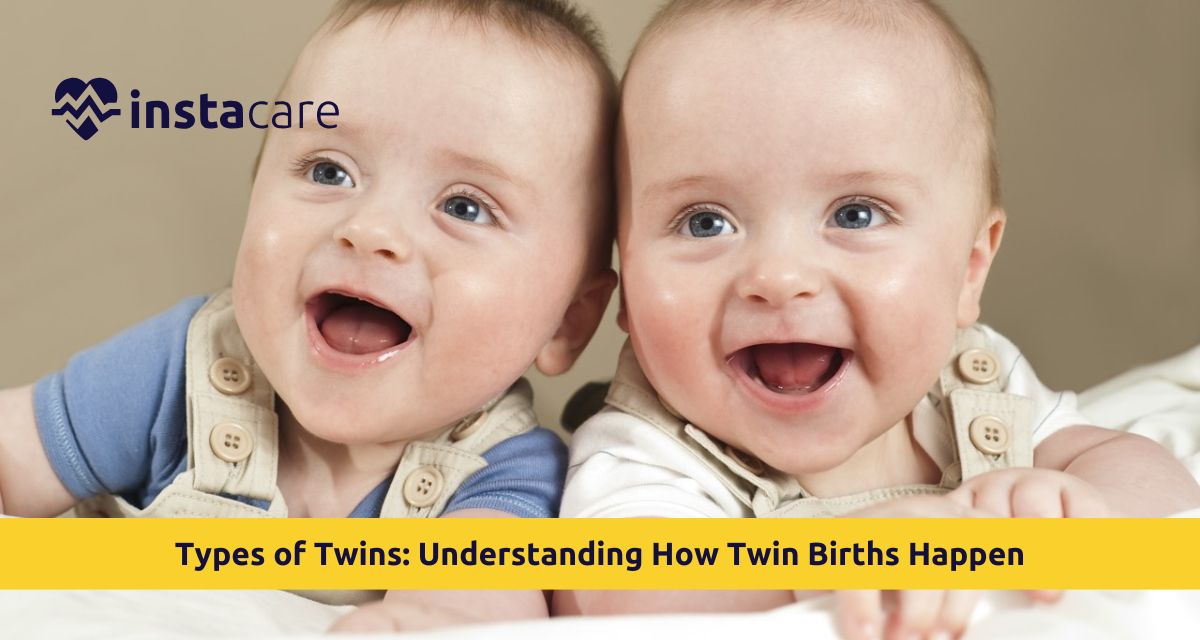About three out of every hundred babies born around the world come as twins - this chance shifts based on family traits, how old the mom is, plus surroundings. While most pairs are either full clones or just siblings from the same pregnancy, some rare types of twins like mirrored versions or physically linked twins add extra layers to why twin DNA gets so curious.
Major Types of Twins
The main twin pregnancy types include identical ones - known as monozygotic - as well as fraternal pairs, which people often call dizygotic.
Identical Twins (Monozygotic Twins)
Identical twins come from one egg that's been fertilized and later divides into two separate embryos. Because of this split, their DNA ends up being exactly the same - like mirror copies. Traits seen in monozygotic twins often show near-perfect similarity:
- Same-gender pairs appear nearly every time
- Looks almost identical
- Sharing a matching blood type - or sometimes even similar eye shade - more often than you'd think
- Could have similar health issues due to shared genes
Identical twins show up about once every 250 babies born around the world. When the fertilized egg divides inside the womb determines whether they grow in their own amniotic space or end up sharing a single one.
Fraternal Twins (Dizygotic Twins)
Fraternal twins form if two separate eggs are fertilized using different sperm. Usually, dizygotic twins carry around half of their genes in common - just like any brother or sister might. Here's what typically marks fraternal twin pairs:
- Could be two males, two females, or one of each
- Might not look alike
- It happens more often when genes play a role, the mother is older, or medical help is used to get pregnant
- Far more frequent when compared to identical twins
Fraternal twins go by another name - dizygotic ones. These types account for more twin deliveries around the globe.
Rare and Unique Types of Twins
Besides the usual sorts, a few uncommon twin types are:
- Conjoined Twins: One fertilized egg that fails to split fully leads to conjoined twins. These twins might join at the belly, chest, or skull - making twin pregnancies much tougher. While some share vital organs, others face surgery soon after birth.
- Mirror Image Twins: Mirror-image twins look nearly the same, yet flipped like reflections - say, one's left dimple matches the other's right. One might favor their right hand while the other leans on the left. Facial quirks often switch sides too, such as partings or smiles. Such pairs form when embryos split later during development.
- Semi-Identical Twins: Semi-identical twins happen when a single egg gets fertilized by two sperm before splitting into two embryos - these twins carry more shared DNA compared to regular siblings, yet not quite as much as identical pairs do.
- Superfetation Twins: Superfetation twins happen if a second egg gets fertilized several days or even weeks after the first one; so, the twins develop at separate stages inside the womb.
- Superfecundation Twins: Superfecundation twins come from two eggs made during one cycle, each fertilized at separate times with sperm from distinct acts - so they can have different fathers.
Some kinds show up almost never - yet still reveal how wild twin genetics explained can get.
Factors Influencing Twin Births
Here's what can make having twins more likely:
- Genetics: Some ladies are more likely to have twins because of their family genes - this goes double for non-identical pairs, thanks to inherited traits passed down through generations.
- Maternal Age: Females over 30 are more likely to release several eggs at once when they ovulate - this boost in odds comes with age.
- Fertility Treatments: Fertility treatments like medications or IVF increase odds for twins - one reason they're linked to more double births.
- Previous Pregnancies: A lady that's had a baby before has a better chance of having two this time around.
- Race and Ethnicity: Race and ethnicity matter - fraternal twins appear more often among some populations, like Black women.
One reason might be why certain families see twins appear regularly across different generations.
Identical vs. Fraternal Twins – What's the Difference?
The gap between differences between identical and fraternal twins goes beyond just DNA - other factors play a role too:
- Genetic Similarity: Identical twins carry the exact same genes; on the flip side, fraternal ones have roughly 50% in common.
- Physical Appearance: Folks often mix them up - identical twins seem like clones, yet fraternal ones could pass as regular siblings without a family tie at first glance.
- Gender: Identical twins are either both girls or both boys, whereas non-identical ones might differ - one boy, one girl.
- Placenta and Amniotic Sac: Whether identical twins share one placenta or their own depends on how soon the embryo splits - timing makes all the difference. On the flip side, non-identical twins each get individual placentas and sacs, no exceptions.
Knowing this stuff helps spot twin pregnancies sooner and handle them better down the line.
Can You Influence the Chances of Having Twins?
Most twin pregnancies happen by chance, yet certain things might boost the odds:
- Family History: Family history plays a role - when non-identical twins run in the mom's family, likelihood goes up.
- Diet: Food choices matter; research hints that eating more dairy could raise the probability.
- Age: Older moms, especially those in their late thirties or early forties, often release more than one egg each month.
- Fertility Treatments: Procedures like in vitro fertilization (IVF) or drugs that trigger extra ovulation can sharply lift the odds of twins.
Still, it's impossible to predict if any twin pair will be identical or just siblings born together.
Conclusion
Twin births bring something special to how humans reproduce - full of surprises. Identical ones form from one egg splitting, while fraternal come from two separate eggs; then there's the uncommon cases like twins joined at birth, those showing mirrored traits, or even half-identical pairs - all adding layers to what can happen during pregnancy.
Learning about their genes, why some moms have twins more often, and how each kind differs gives doctors and families better ways to handle these pregnancies. Whether they share every gene or just some, no twin development in womb is exactly alike, it's all part of how wild fetal growth can be.
Please book an appointment with the
Best Gynecologist in Lahore, Karachi, Islamabad, and all major cities of Pakistan through
InstaCare, or call our helpline at 03171777509 to find the verified doctor for your disease.

